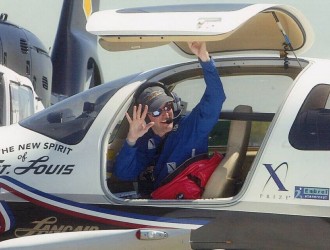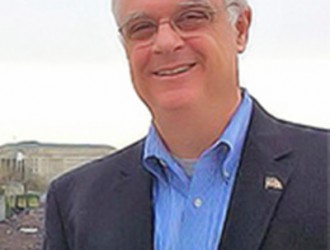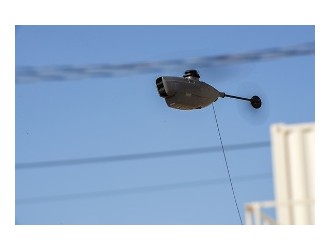Since being signed into law as a part of the FAA Extension, Safety and Security Act of 2016, most pilots have been eagerly awaiting the official rollout of BasicMed. On May 1, the law was officially implemented by a brand new FAR Part 68 — Requirements for Operating Certain Small Aircraft Without a Medical Certificate.
Pilots who meet the prerequisite requirements for participation and who are willing to fly under a very specific set of private pilot level rules may act as pilot in command of a conforming Class I aircraft without possessing a third class medical certificate.
In lieu of the medical certificate, pilots using the alternative BasicMed rule must possess a valid state driver’s license, must fill out an individual information questionnaire and then complete a simple medical examination by their personal physician.
Afterwards, armed with a doctor’s signature and identifying information, BasicMed pilots complete an online BasicMed course provided free of charge by the Aircraft Owners and Pilots Association Air Safety Institute.
once the course is complete and a 20 question test is passed with an 80% or greater grade, a BasicMed Course completion certificate is issued. The exam and course documents are carried in lieu of a Class III AME issued medical. That’s it.
only three medical conditions are disqualifying: Specifically defined mental, neurological and cardiac issues. These will require a one-time formal FAA Special Issuance before using or reusing the BasicMed process. In addition, any substance abuse issues will delay use of BasicMed.
After just two days, AOPA reported that 1,354 pilots had fully completed the entire process and may fly under BasicMed rules.
Another 3,897 had completed the online course and exam without physician information yet entered and 2,412 had begun but had not completed the course.
One of those in the last group, 46-year pilot and multiple aircraft owner Larry Stencel described how he made it all work for him on day three of BasicMed, May 3.
He started months in advance by reading and analyzing the early tentative AC 68-1 and then by establishing a relationship with a new local personal care physician.
Assuming the doctor would be unfamiliar with the evolving history of BasicMed and its requirements, he wrote a “Primer on Basic Med” and presented it to the doctor during his first initial visit. Talking about airplanes, the doctor mentioned that he had a family member who owned a Maule. At that point, Larry said that he knew the doctor was likely to be receptive to doing the exam.
On his second visit a month later, Larry asked the doctor point blank if he’d do the exam; the doctor said, “Yes.” He feels that the educational primer he provided made the difference.
He made a third appointment for May 3, allowing for a few days extra “just in case.”
Prior to that visit, he completed a biannual comprehensive eye exam by his ophthalmologist who — by the way — was his AME. Armed with a fresh eye health and vision exam, Larry brought that report with him for the BasicMed exam.
Larry said that when his doctor brought the FAA approved physician exam form into the exam room, he wryly asked, “Why the heck does the FAA want an anus exam to fly an airplane?” You can imagine the discourse that followed that question.
Thirty minutes later, Larry had the doctor’s signature on the BasicMed Exam form.
Larry tells us that he noted a significant difference between the Section 3 Exam form first revealed in January and the final official form being used now. The tentative form had 22 areas to examine with a column labeled “Abnormalities, Yes or No.” The final form has the same categories followed by “Examined.” He said this was noted by his physician, as well.
He feels that this change made the doctor more willing to sign the form and thanks whoever was responsible for it.
“The AOPA BasicMed pamphlet also was a great help,” he explained.
Upon returning home from the doctor visit, he spent a couple of hours taking the online BasicMed course and exam, then printed out his Course Completion Certificate and was done.
He said that considering how long pilots have been hoping for medical reform only to be rebuffed for one reason or another, finally exercising such a welcome new rule was actually anticlimactic to him.
“I no longer have to fear failing an AME exam every other year,” he said.
Larry said he sees the new rule as a sort of “halfway” between flying as a sport pilot and a full privileges private pilot requiring a Class III exam, which will work perfectly for him.
Instead of selling his C172 and PA28, which he has owned for 32 and 15 years respectively, he will now keep both and spend some money updating them with ADS-B and other avionics refinements, as well as cosmetic improvements. He plans on doing some serious shopping at this year’s AirVenture.

Sadly, he notes, some of his pilot friends are havin a problem finding a physician willing to sign a BasicMed exam form. He urges those in that situation to use his method — educate them, work with them and, if necessary, find another doctor.
As to the question of some doctors havin liability issues with signing the form, he opines that maybe AOPA and the Experimental Aircraft Association (EAA) ought to form a separate entity to provide liability insurance for doctors who need it. His doctor was part of a much larger hospital network that covers liability issues.
Larry adds that BasicMed was “worth the wait,” considering how much better flying under BasicMed is versus what would have evolved from the AOPA/EAA Petition for Exemption from the Class III physical requirements, which was held up by the Department of Transportation.
People with much more complex airplanes will be able to exercise their pilot certificates and keep their existing airplanes and that’s a “good thing,” he says.
BasicMed will increase the period between doctor visits from two to four years with the requirement to retake the AOPA online course every other year.
“Best of all, you don’t fail a BasicMed exam,” he said. “If a doctor feels uncomfortable signing you off as fit to fly, he or she just refuses to sign.”
Finally, BasicMed will likely now encourage pilots to be more proactive with their personal health without fearing uncovering something that might have caused issues when taking AME exams.
Larry urges all pilots who want to fly under BasicMed to read the new FAR Part 68 and to revisit applicable parts of FAR Part 61 — “then, go fly.”
“Give BasicMed a try if it will fit your mission requirements,” he concludes.





